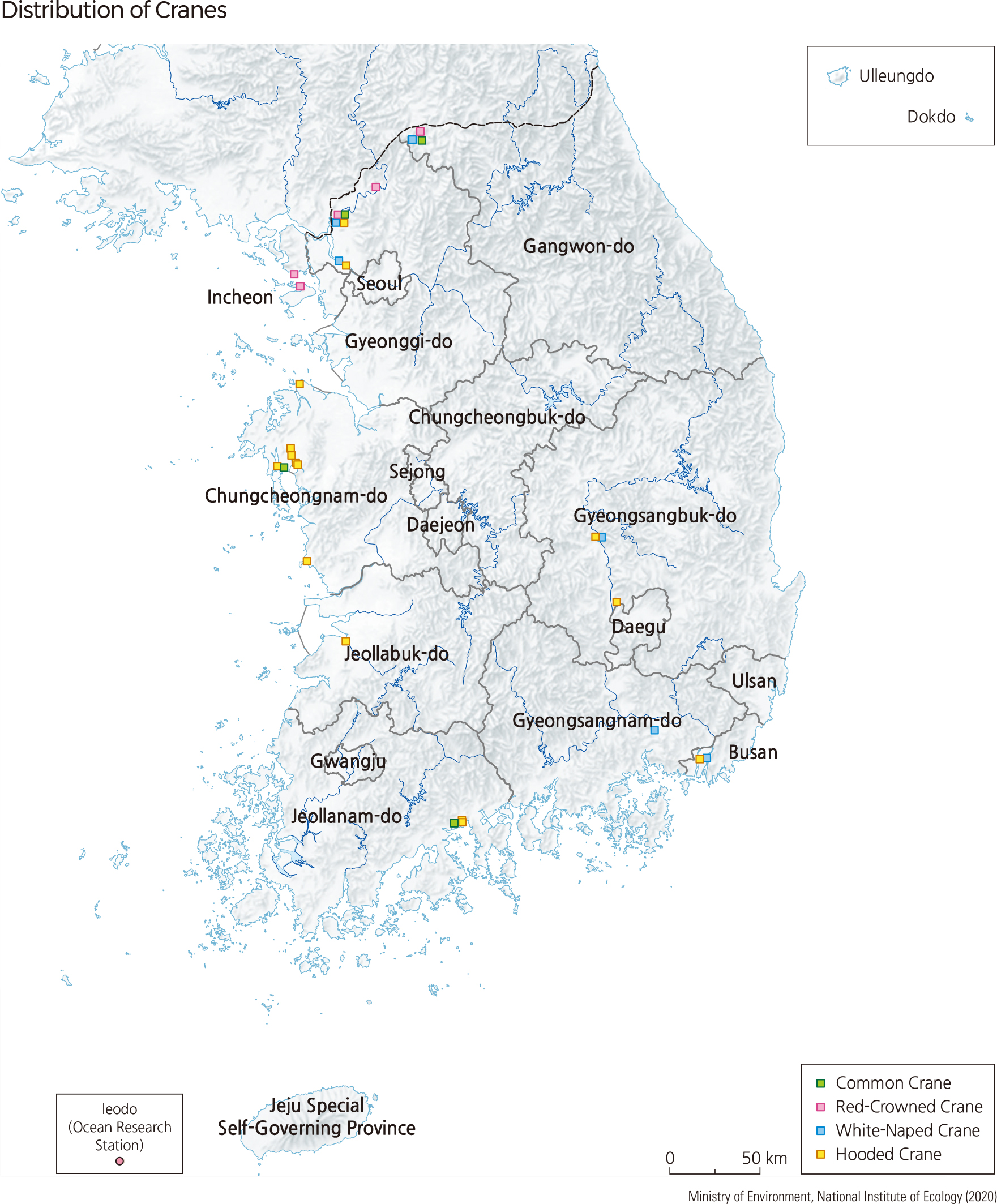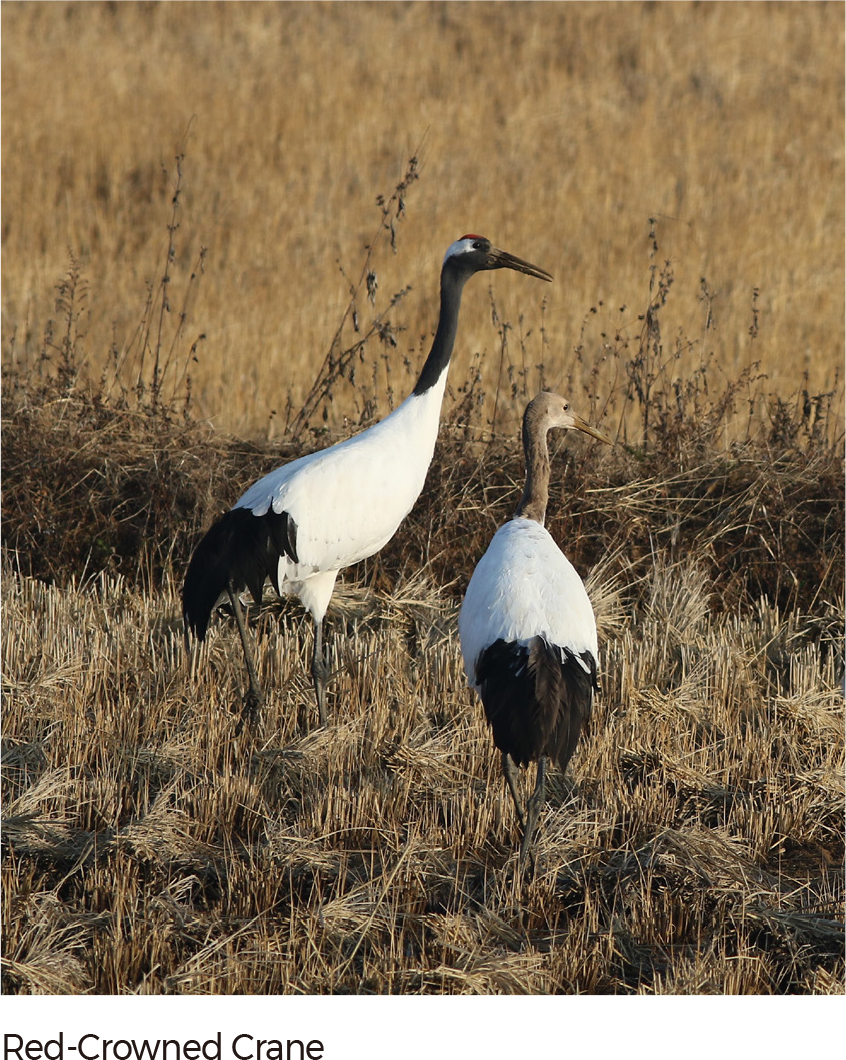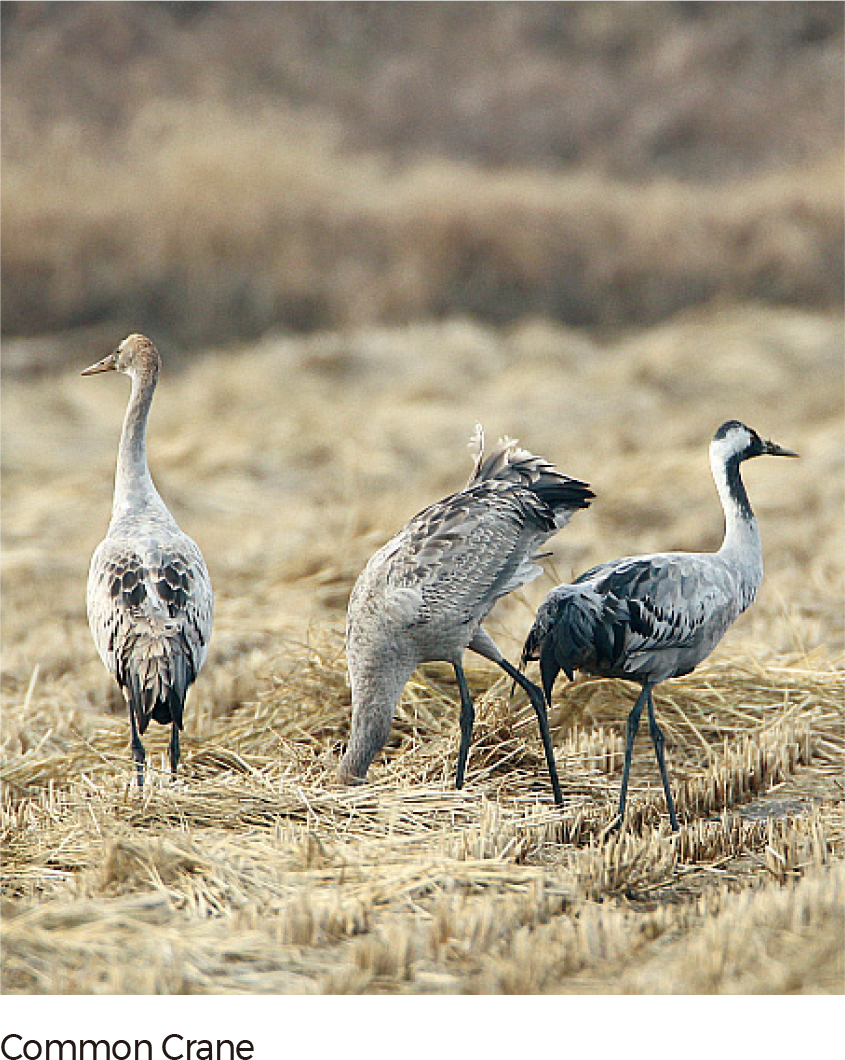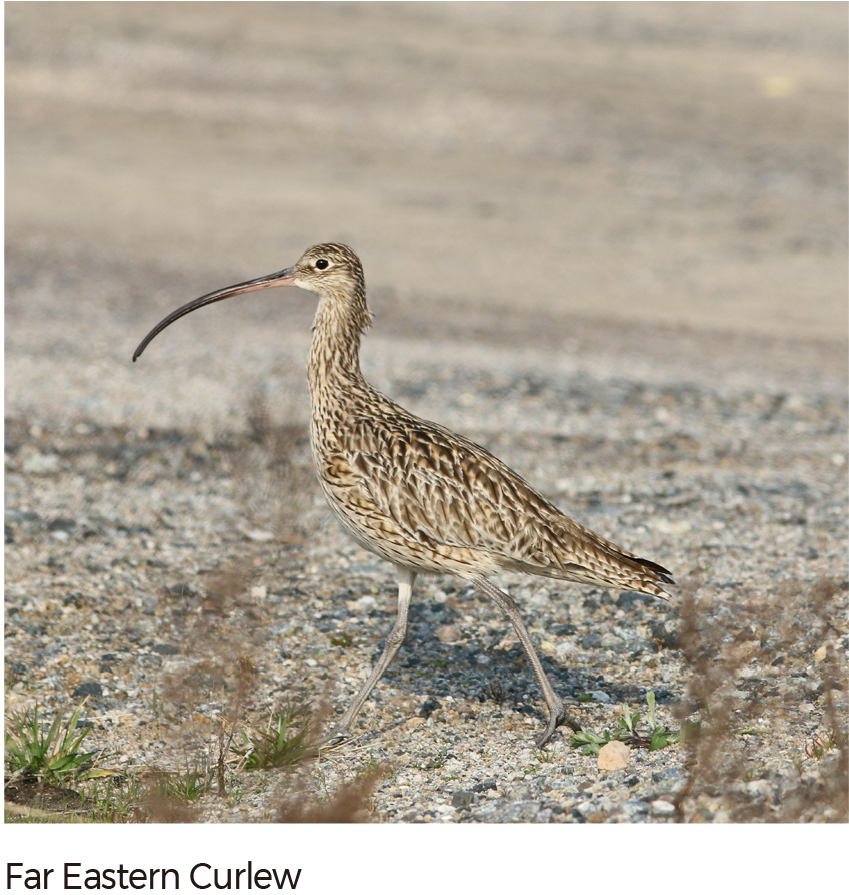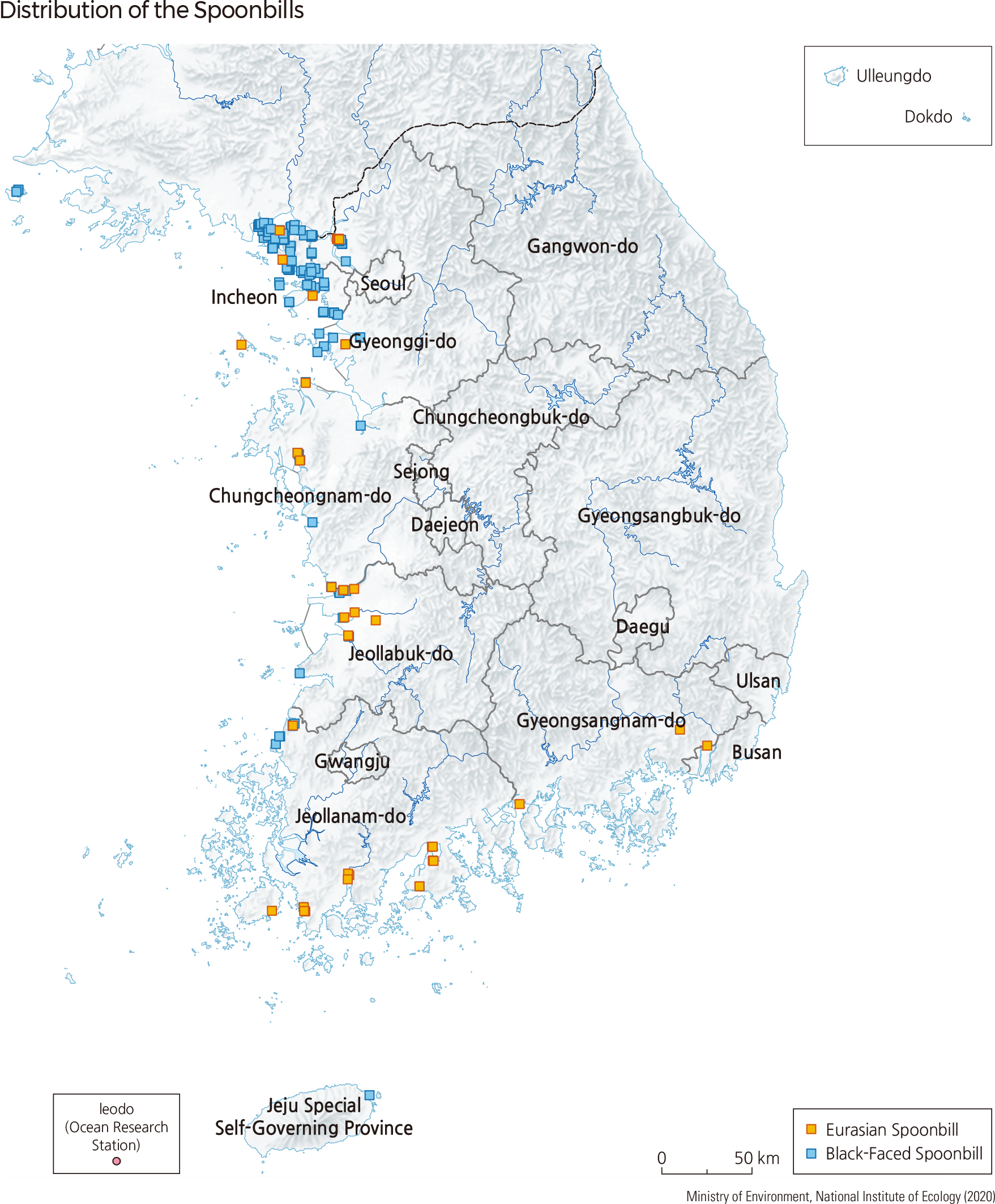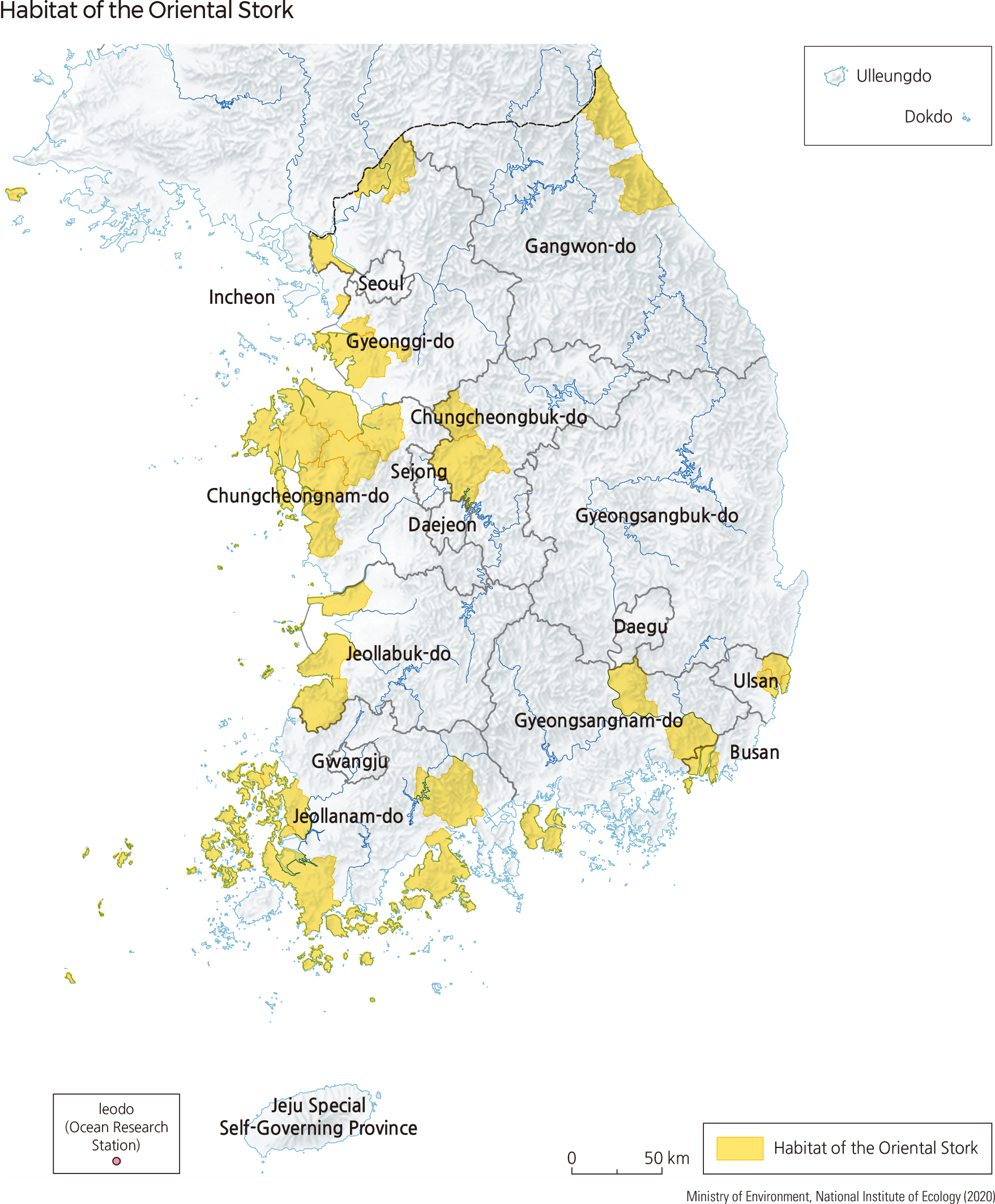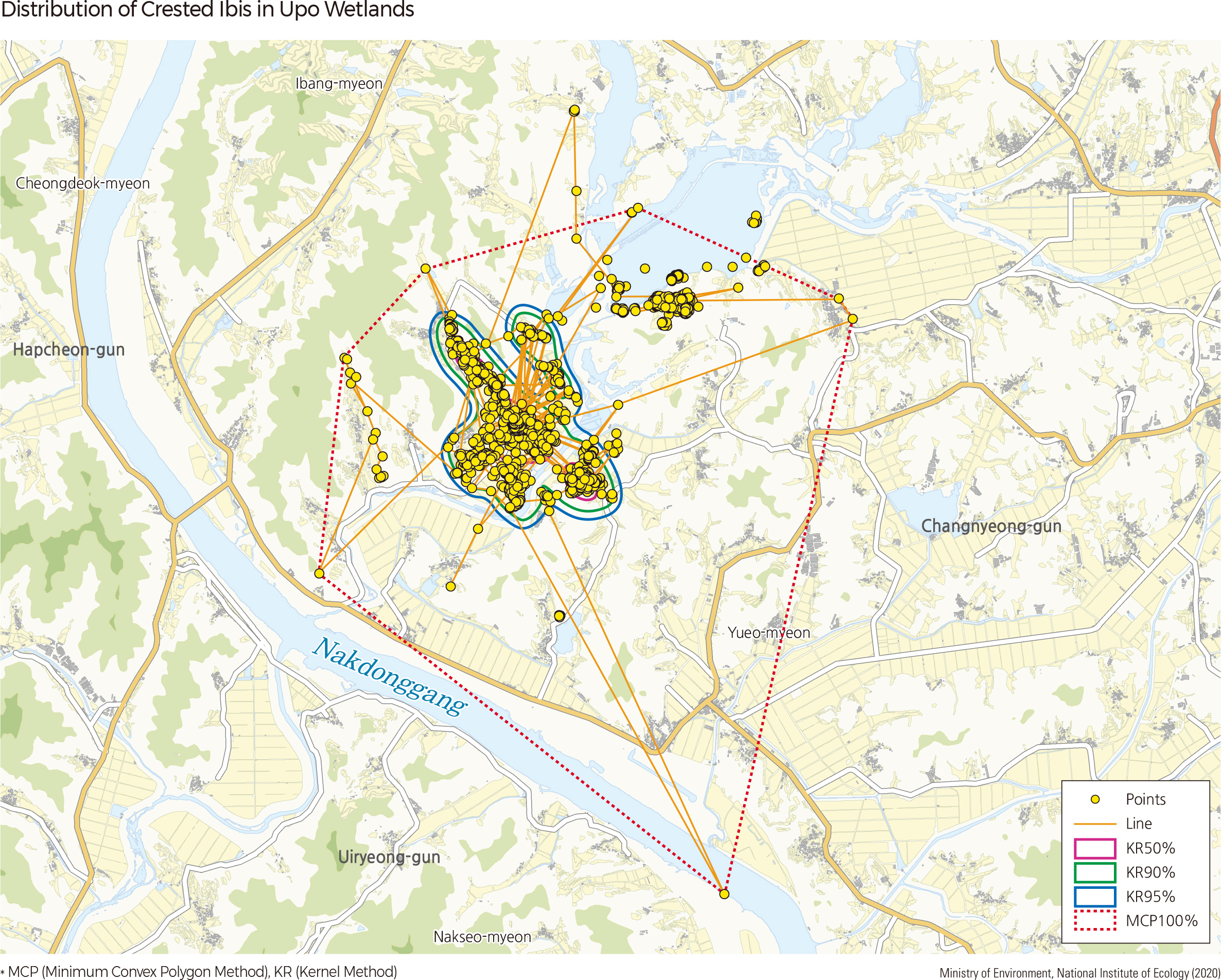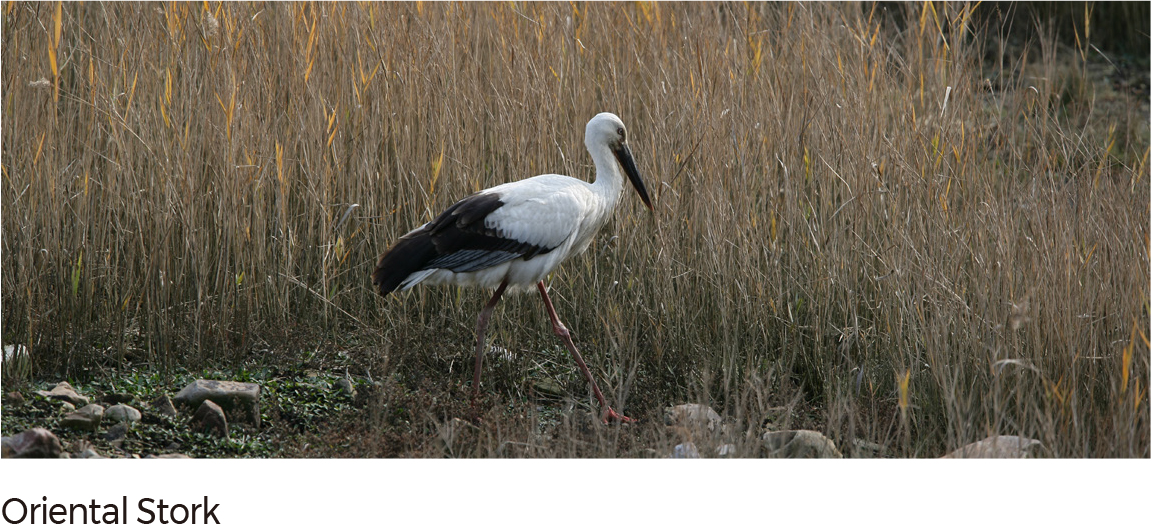English II 2020
Globally, cranes include four genera and 15 species. In Korea, Red-crowned Crane, White-naped Crane, and Hooded Crane are commonly observed. Demoiselle Crane, Eurasian Crane, Siberian Crane, and Sandhill Crane can be observed during migratory and wintering seasons. Cranes inhabit wetlands or grasslands. The wintering season in South Korea spans from October to March, during which the flock migrates south from its summer habitat. Cranes display diurnal behaviors, differentiating sleeping grounds and feeding territories in wintering areas in South Korea, and mostly feed on plant bulbs, fallen grains and invertebrates in cultivated fields. The Hooded Crane inhabits South Korea only temporarily as a migratory stopover; however, the population of Hooded Cranes has been increasing recently. Of the cranes inhabiting South Korea, the Red-crowned Crane and Siberian Crane are globally endangered species. The Red-crowned Crane is protected and designated as both an Endangered Wildlife Class I and Natural Monuments. The Siberian Crane is protected as a critically endangered species on the IUCN Red List.
Of the 216 bird species recorded globally as shorebirds, 70.8% of species belong to the sandpiper or plover family. A total of 63 species and seven families of sandpipers and plovers have been recorded in South Korea, including families such as Recurvirostridae, Charadriidae, Rostratulidae, Jacanidae, Scolopacidae, Glareolidae, and Haematopodidae belonging to the order Charadriiformes. Sandpipers and plovers follow the East Asia-Australia Flyway (EAAF) for breeding and wintering and use regions of South Korea as a stopover area. In shallow wetlands, they mainly feed on various meat diets, but some feed on plants.
Of 72 species of herons worldwide, 18 species inhabit South Korea. The nine common species are the Black-crowned Night Heron, Grey Heron, Chinese Pond Heron, Eastern Cattle Egret, Pacific Reef Heron, and Chinese Egret, which breed around low hilly forests near villages or in the woodlands of uninhabited islands. The Chinese Little Bittern and Schrenk's Bittern breed in emerging plant communities. The Green-Backed Heron breeds in woodlands. Records from 2009 indicate sightings of the Japanese Night Heron breeding in Jejudo and Gubongsan of Busan. While rarely spotted, the spring and autumn migratory seasons are the time of year to occasionally see the Cinnamon Bittern, Black Bittern, and Purple Heron. In contrast, the Eurasian Bittern is rarely spotted during the winter season. A single individual of the Malayan Night Heron species was rescued in Gunsan-si in 2006. Of the 36 species of spoonbills in the world, five species inhabit Korea. They live in shallow wetlands, such as tidal flats, rice paddies, and estuaries, and eat small fish, shrimp, amphibians, aquatic insects, and worms. Black-faced Spoonbill breed mainly on uninhabited islands at the border between South Korea and North Korea. They also breed on the west coast of the Korean Peninsula, such as Chilsando in Yeongwang-gun, Gakshibawi Rock at the southern end of Ganghwa-gun, and an artificial island within the Namdong retarding reservoir of Incheon. In 1994, Black-faced Spoonbill were in danger of extinction as only about 300 survived in the world. Since then, the population has steadily increased due to global protection efforts, and it is now more than 4,000. Black-faced Spoonbill are summer migratory birds, but less than 40 of them pass the winter in Jejudo. The Eurasian Spoonbill is an uncommon winter migratory bird. They pass the winter in the reclaimed area of Cheonsu Bay, Junam Reservoir, Suncheon Bay, and the Hangang estuary from mid-October to the end of March of the following year.
Of the 19 species of storks, two species, Oriental Stork and Black Stork, inhabit Korea. They feed on fish, amphibians, and reptiles, such as loaches, frogs, and snakes in rice paddies, shallow rivers, agricultural lands, and wetlands. In April 1970, after the death of an Oriental Stork in Eumseong, Chungcheongbuk-do, wild storks were extirpated from Korea. A restoration project has been underway since 1996. Thirty-eight Oriental Storks were introduced from Russia, Germany, and Japan, and approximately 160 Oriental Storks have been artificially propagated. Sixty-seven of them have been released into the wild. Since 2016, 53 storks have hatched in the wild. Black Stork breed on rocky cliffs at the edge of forests. After breeding was confirmed in Gasong-ri, Andong-gun, Gyeongsangbuk-do in 1968, Black Stork that breed domestically have disappeared. Currently, Black Stork become winter migratory birds. A small number of them pass the winter in Dongbok Lake in Hwasun-gun, Jeollanam-do and Naeseongcheon in Yeongju-si and Yecheon-gun in Gyeongsangbuk-do. Crested Ibis, belonging to the Spoonbill family, arrived in Korea as a winter migratory bird in the past. It is believed that Crested Ibis breeds in the northern part of the Korean Peninsula. Since December 1978, no wild Crested Ibis have been identified in Korea. Since 2008, a restoration project has been underway in the Upo wetlands in Changnyeong-gun, Gyeongsangnam-do. A total of 401 Crested Ibises were artificially propagated from four introduced Crested Ibises. Since 2019, 40 of them have been released into the wild. Black-headed Ibis and Glossy Ibis are stray birds observed only a few times in Korea. |
